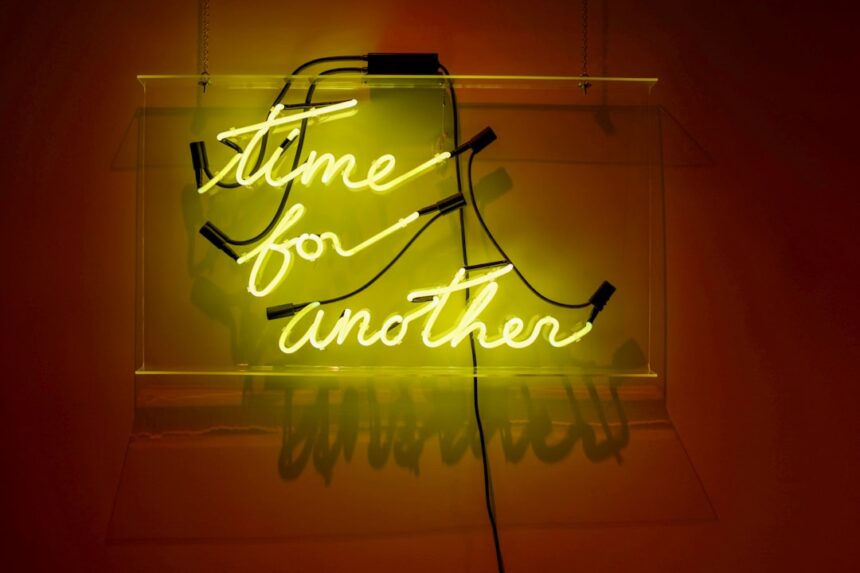The in-between time is a unique and often overlooked phase in life, a space where you find yourself suspended between what was and what is yet to come. It can feel disorienting, as you may grapple with feelings of uncertainty and anticipation. This transitional period is not merely a waiting room for the next chapter; rather, it is a rich tapestry of experiences that can shape your understanding of yourself and the world around you.
Recognizing this phase as an opportunity for growth can transform your perspective, allowing you to embrace the complexities of life with open arms. In this in-between space, you may find that your thoughts drift back to past experiences or leap forward to future possibilities. However, it is essential to understand that this time is not just about lingering in nostalgia or anxiety.
Instead, it serves as a fertile ground for self-reflection and exploration. By acknowledging the significance of this phase, you can begin to cultivate a deeper awareness of your emotions and desires, ultimately leading to a more profound understanding of your journey.
Key Takeaways
- The in-between time is the period of transition and uncertainty between the past and the future.
- Letting go of the past and releasing the future allows for a greater focus on the present moment.
- Embracing the beauty of the present moment involves finding joy in small, everyday moments.
- Practicing mindfulness and living in the now helps in navigating uncertainty and finding peace in the present.
- Embracing the in-between time as a time for self-discovery and reflection allows for embracing change and growth.
Letting go of the past and releasing the future
To fully embrace the in-between time, you must learn to let go of the past and release any attachment to the future. This process can be challenging, as memories often cling to you like shadows, and the allure of what lies ahead can be intoxicating. However, clinging to past regrets or future anxieties can prevent you from experiencing the richness of the present moment.
By consciously choosing to release these burdens, you create space for new experiences and insights to emerge. Letting go does not mean forgetting or dismissing your past; rather, it involves acknowledging its role in shaping who you are today. You can honor your experiences while simultaneously freeing yourself from their weight.
Similarly, releasing the future entails recognizing that while it is natural to plan and dream, excessive focus on what is yet to come can lead to unnecessary stress and disappointment. By practicing acceptance and surrendering to the flow of life, you open yourself up to the possibilities that exist in the here and now.
Embracing the beauty of the present moment

The present moment is a treasure trove of beauty waiting to be discovered. When you shift your focus away from the past and future, you begin to notice the intricate details of your surroundings and the richness of your experiences. Each moment holds its own unique charm, whether it’s the warmth of sunlight on your skin, the laughter of a friend, or the simple act of breathing.
By embracing these moments, you cultivate a sense of appreciation for life as it unfolds. To truly appreciate the present, you must engage with it fully. This means immersing yourself in your experiences without distraction or judgment.
When you allow yourself to be present, you create a deeper connection with yourself and those around you. You may find that even mundane tasks become infused with meaning when approached with mindfulness. The beauty of the present moment lies not only in grand experiences but also in the small, everyday occurrences that often go unnoticed.
Finding joy in the small, everyday moments
| Everyday Moments | Joy Level |
|---|---|
| Morning coffee | High |
| Walking in nature | Medium |
| Laughing with friends | High |
| Reading a good book | High |
| Listening to favorite music | Medium |
Joy often resides in the small, everyday moments that make up your life. It can be found in a warm cup of coffee on a chilly morning, a shared smile with a stranger, or the sound of rain tapping against your window. These seemingly insignificant moments hold immense power when you take the time to acknowledge and appreciate them.
By shifting your focus from grand achievements to simple pleasures, you can cultivate a sense of contentment that permeates your daily life. Finding joy in the small moments requires a shift in perspective. Instead of waiting for monumental events to bring happiness, you can train yourself to seek out joy in the ordinary.
This practice encourages you to slow down and savor each experience as it comes. You may discover that joy is not a destination but rather a way of being—an attitude that allows you to find delight in even the most routine aspects of life.
Practicing mindfulness and living in the now
Mindfulness is a powerful tool for anchoring yourself in the present moment. By practicing mindfulness, you learn to observe your thoughts and feelings without judgment, creating space for awareness and acceptance. This practice allows you to fully engage with your experiences rather than getting lost in distractions or worries about what lies ahead.
As you cultivate mindfulness, you may find that your perception of time shifts; moments become richer and more vivid. Living in the now means prioritizing your current experience over past regrets or future anxieties. It involves tuning into your senses—what do you see, hear, smell, taste, and feel?
By immersing yourself in these sensations, you create a deeper connection with your surroundings and yourself. Mindfulness encourages you to embrace each moment as it comes, fostering a sense of peace and clarity that can guide you through life’s uncertainties.
Cultivating gratitude for what is here and now

Gratitude is a transformative practice that can enhance your experience of the present moment. When you cultivate gratitude for what is here and now, you shift your focus from what is lacking to what is abundant in your life. This shift in perspective allows you to appreciate even the smallest blessings—a warm meal, a kind word from a friend, or simply the beauty of nature surrounding you.
To cultivate gratitude effectively, consider keeping a gratitude journal where you regularly jot down things you are thankful for. This practice encourages you to reflect on positive experiences and moments of joy that might otherwise go unnoticed. Over time, you’ll likely find that gratitude becomes a natural part of your daily routine, enriching your life and deepening your connection to the present moment.
Navigating uncertainty and finding peace in the present
Uncertainty is an inherent part of life, especially during periods of transition or change. Instead of resisting uncertainty or allowing it to overwhelm you, consider embracing it as an opportunity for growth and exploration. When faced with uncertainty, remind yourself that it is okay not to have all the answers right now.
By accepting this reality, you can find peace in the present moment rather than getting lost in worry about what might happen next. Finding peace amidst uncertainty requires practice and patience. You may benefit from grounding techniques such as deep breathing or meditation that help anchor you in the present moment.
These practices allow you to cultivate a sense of calm even when external circumstances feel chaotic or unpredictable. By learning to navigate uncertainty with grace, you empower yourself to embrace life’s ebb and flow without fear.
Embracing change and growth in the in-between time
The in-between time is often characterized by change—a natural part of life that can be both exhilarating and daunting. Embracing change means recognizing it as an opportunity for growth rather than something to be feared or resisted. During these transitional periods, you have the chance to explore new possibilities and redefine your path forward.
As you navigate change, consider reflecting on what this transition means for you personally. What lessons can you learn from this experience? How can it shape your understanding of yourself and your goals?
Letting go of expectations and embracing the journey
Expectations can often cloud your experience of life, leading to disappointment when reality does not align with your hopes or plans. To fully embrace the in-between time, it is essential to let go of rigid expectations about how things should unfold.
Letting go of expectations allows you to approach life with a sense of wonder and curiosity rather than pressure or anxiety. When you release preconceived notions about how things should be, you open yourself up to new experiences that may surprise and delight you. Embracing the journey means recognizing that every step along the way holds significance, even if it doesn’t lead where you initially thought it would.
Finding balance and harmony in the present moment
Finding balance in life often feels like an elusive goal; however, it is achievable when you prioritize living in the present moment. Balance does not mean achieving perfection but rather creating harmony between various aspects of your life—work, relationships, self-care, and personal growth. By focusing on what matters most in each moment, you can cultivate a sense of equilibrium that supports your overall well-being.
To find balance, consider setting boundaries that allow you to prioritize self-care while still engaging with others and pursuing your goals. This may involve saying no to certain commitments or carving out time for activities that nourish your spirit. When you create space for balance in your life, you’ll likely find that each moment becomes more meaningful and fulfilling.
Embracing the in-between time as a time for self-discovery and reflection
The in-between time offers a unique opportunity for self-discovery and reflection—a chance to delve deeper into who you are and what truly matters to you. During this phase, take time to explore your passions, values, and aspirations without distraction or pressure from external expectations. This period of introspection can lead to profound insights about yourself and your path forward.
Embracing self-discovery means allowing yourself the freedom to explore new interests or revisit old ones without judgment. Engage in activities that inspire creativity or spark joy—whether it’s journaling, painting, hiking, or simply spending time alone in nature. By nurturing this connection with yourself during the in-between time, you’ll emerge with greater clarity about your desires and direction moving forward.
In conclusion, understanding and embracing the concept of the in-between time can profoundly impact your experience of life. By letting go of past burdens and future anxieties while cultivating mindfulness and gratitude for each moment, you create space for joy and self-discovery amidst uncertainty. Embrace this unique phase as an opportunity for growth—allowing yourself to navigate change with grace while finding balance within yourself along the way.
In exploring the concept of “in-between time,” it’s fascinating to consider how moments of transition and pause can impact our mental well-being. An insightful article that delves into the psychological aspects of these transitional periods can be found on Unplugged Psych. This piece discusses how embracing the in-between times can lead to personal growth and a deeper understanding of oneself. For more on this topic, you can read the full article by visiting Unplugged Psych.
WATCH NOW! 😱😱😱😱😱The Secret Psychology Cults Use on Anyone
FAQs
What is the in-between time?
The in-between time refers to the period between two significant events or moments in time. It is the transitional phase when one thing has ended, and another has not yet begun.
How is the in-between time experienced?
The in-between time can be experienced as a period of uncertainty, anticipation, and preparation. It is a time when individuals may feel a sense of limbo or transition as they await the next phase or event.
What are some examples of in-between time?
Examples of in-between time include the period between graduating from school and starting a new job, the time between the end of one relationship and the beginning of another, or the transition between moving from one place to another.
How can one make the most of the in-between time?
During the in-between time, individuals can use the opportunity to reflect, set goals, and make plans for the future. It can also be a time for personal growth, self-discovery, and exploration of new opportunities.




